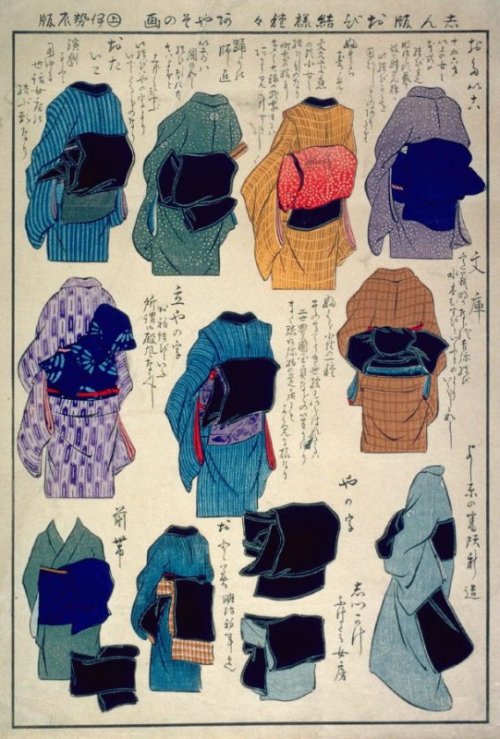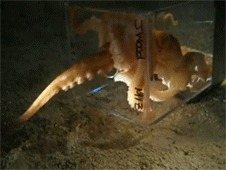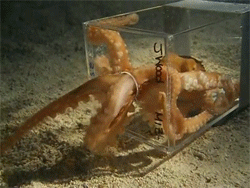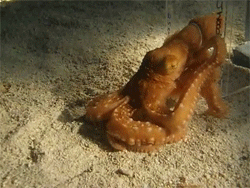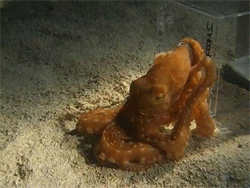Words To Replace Said, Except This Actually Helps
Words to replace said, except this actually helps
I got pretty fed up with looking for words to replace said because they weren’t sorted in a way I could easily use/find them for the right time. So I did some myself.
IN RESPONSE TO Acknowledged Answered Protested
INPUT/JOIN CONVERSATION/ASK Added Implored Inquired Insisted Proposed Queried Questioned Recommended Testified
GUILTY/RELUCTANCE/SORRY Admitted Apologized Conceded Confessed Professed
FOR SOMEONE ELSE Advised Criticized Suggested
JUST CHECKING Affirmed Agreed Alleged Confirmed
LOUD Announced Chanted Crowed
LEWD/CUTE/SECRET SPY FEEL Appealed Disclosed Moaned
ANGRY FUCK OFF MATE WANNA FIGHT Argued Barked Challenged Cursed Fumed Growled Hissed Roared Swore
SMARTASS Articulated Asserted Assured Avowed Claimed Commanded Cross-examined Demanded Digressed Directed Foretold Instructed Interrupted Predicted Proclaimed Quoted Theorized
ASSHOLE Bellowed Boasted Bragged
NERVOUS TRAINWRECK Babbled Bawled Mumbled Sputtered Stammered Stuttered
SUAVE MOTHERFUCKER Bargained Divulged Disclosed Exhorted
FIRST OFF Began
LASTLY Concluded Concurred
WEAK PUSY Begged Blurted Complained Cried Faltered Fretted
HAPPY/LOL Cajoled Exclaimed Gushed Jested Joked Laughed
WEIRDLY HAPPY/EXCITED Extolled Jabbered Raved
BRUH, CHILL Cautioned Warned
ACTUALLY, YOU’RE WRONG Chided Contended Corrected Countered Debated Elaborated Objected Ranted Retorted
CHILL SAVAGE Commented Continued Observed Surmised
LISTEN BUDDY Enunciated Explained Elaborated Hinted Implied Lectured Reiterated Recited Reminded Stressed
BRUH I NEED U AND U NEED ME Confided Offered Urged
FINE Consented Decided
TOO EMO FULL OF EMOTIONS Croaked Lamented Pledged Sobbed Sympathized Wailed Whimpered
JUST SAYING Declared Decreed Mentioned Noted Pointed out Postulated Speculated Stated Told Vouched
WASN’T ME Denied Lied
EVIL SMARTASS Dictated Equivocated Ordered Reprimanded Threatened
BORED Droned Sighed
SHHHH IT’S QUIET TIME Echoed Mumbled Murmured Muttered Uttered Whispered
DRAMA QUEEN Exaggerated Panted Pleaded Prayed Preached
OH SHIT Gasped Marveled Screamed Screeched Shouted Shrieked Yelped Yelled
ANNOYED Grumbled Grunted Jeered Quipped Scolded Snapped Snarled Sneered
ANNOYING Nagged
I DON’T REALLY CARE BUT WHATEVER Guessed Ventured
I’M DRUNK OR JUST BEING WEIRDLY EXPRESSIVE FOR A POINT/SARCASM Hooted Howled Yowled
I WONDER Pondered Voiced Wondered
OH, YEAH, WHOOPS Recalled Recited Remembered
SURPRISE BITCH Revealed
IT SEEMS FAKE BUT OKAY/HA ACTUALLY FUNNY BUT I DON’T WANT TO LAUGH OUT LOUD Scoffed Snickered Snorted
BITCHY Tattled Taunted Teased
Edit: People, I’m an English and creative writing double major in college; I understand that there’s nothing wrong with simply using “said.” This was just for fun, and it comes in handy when I need to add pizzazz.
More Posts from Philosophical-amoeba and Others



Meet the orchid mantis.
Orchid mantises—particularly juveniles—seem aptly named. They’re predominantly white with pink or yellow accents, similar to some orchids and other flowers, and their four hind legs are lobed, like petals. But if you search for an exact floral counterpart, as behavioral ecologist James O’Hanlon did, you probably won’t find one. “I spent forever looking for a flower that they look just like,” he says, to no avail.
As it turns out, rather than mimicking one floral species, the insect instead may embody a “generic or an average type of flower” in order to attract bees and other pollinating insects as prey.
What’s more, as far as O’Hanlon can tell, it’s the only animal on record that “takes on the guise of a whole flower blossom” as a predatory strategy.
Learn more here.
Solar System: Things to Know This Week
Add to your electronic bookshelf with these free e-books from NASA!
1. The Saturn System Through the Eyes of Cassini

This work features 100 images highlighting Cassini’s 13-year tour at the ringed giant.
2. Earth as Art

Explore our beautiful home world as seen from space.
3. Meatballs and more

Emblems of Exploration showcases the rich history of space and aeronautic logos.
4. Ready for Our Close Up

Hubble Focus: Our Amazing Solar System showcases the wonders of our galactic neighborhood.
5. NASA’s First A

This book dives into the role aeronautics plays in our mission of engineering and exploration.
6. See More

Making the Invisible Visible outlines the rich history of infrared astronomy.
7. Ready for a Deeper Dive?

The NASA Systems Engineering Handbook describes how we get the job done.
8. Spoiler Alert

The space race really heats up in the third volume of famed Russian spacecraft designer Boris Chertok memoirs. Chertok, who worked under the legendary Sergey Korolev, continues his fascinating narrative on the early history of the Soviet space program, from 1961 to 1967 in Rockets and People III.
9. Take a Walk on the Wild Side

The second volume of Walking to Olympus explores the 21st century evolution of spacewalks.
10. No Library Card Needed
Find your own great read in NASA’s free e-book library.
Make sure to follow us on Tumblr for your regular dose of space: http://nasa.tumblr.com.




In 1992, a man named Wu Anai, near a Chinese village in Longyou County, based on a hunch, began to pump water out of a pond in his village. Anai believed the pond was not natural, nor was it infinitely deep as the local lore went, and he decided to prove it. He convinced some of his villagers and together they bought a water pump and began to siphon water out of the pond. After 17 days of pumping, the water level fell enough to reveal the flooded entrance to an ancient, man-made cave!
The cave has twenty-four rooms. There are pillars, staircases, and high ceilings over 30 meters (98 ft!) up. The work was done by humans, we know, because they left visible chisel marks in uniform bands of parallel groves. With over 30,000 square meters of space, all meticulously chiseled, this would have been a huge undertaking. Even if people were simply enlarging caves which already existed, it would still have required a lot of manpower working in a coordinated system for a long period of time.
Since the project would have been so large, it seems amazing that no record of it exists in China’s extensive written history. But there is not a word. Based on the cave alone, it is estimated to have been completed around 200 BCE, near the Qin Dynasty or Han Dynasties.
Could you explain this tfw no ZF joke? I really dont get it... :D
Get ready for a long explanation! For everyone’s reference, the joke (supplied by @awesomepus) was:
Q: What did the mathematician say when he encountered the paradoxes of naive set theory?A: tfw no ZF
You probably already know the ‘tfw no gf’ (that feel when no girlfriend) meme, which dates to 2010. I’m assuming you’re asking about the ZF part.
Mathematically, ZF is a reference to Zermelo-Fraenkel set theory, which is a set of axioms commonly accepted by mathematicians as the foundation of modern mathematics. As you probably know if you’ve taken geometry, axioms are super important: they are basic assumptions we make about the world we’re working in, and they have serious implications for what we can and can’t do in that world.
For example, if you don’t assume the Parallel Postulate (that consecutive interior angle measures between two parallel lines and a transversal sum to 180°, or twice the size of a right angle), you can’t prove the Triangle Angle Sum Theorem (that the sum of the angle measures in any triangle is also 180°). It’s not that the Triangle Angle Sum Theorem theorem is not true without the Parallel Postulate — simply that it is unprovable, or put differently, neither true nor false, without that Postulate. Asking whether the Triangle Angle Sum Theorem is true without the Parallel Postulate is really a meaningless question, mathematically. But we understand that, in Euclidean geometry (not in curved geometries), both the postulate and the theorem are “true” in the sense that we have good reason to believe them (e.g., measuring lots of angles in physical parallel lines and triangles). Clearly, the axioms we choose are important.
Now, in the late 19th and early 20th century, mathematicians and logicians were interested in understanding the underpinnings of the basic structures we use in math — sets, or “collections,” being one of them, and arithmetic being another. In short, they were trying to come up with an axiomatic set theory. Cantor and Frege were doing a lot of this work, and made good progress using everyday language. They said that a set is any definable collection of elements, where “definable” means to provide a comprehension (a term you’re familiar with if you program in Python), or rule by which the set is constructed.
But along came Bertrand Russell. He pointed out a big problem in Cantor and Frege’s work, which is now called Russell’s paradox. Essentially, he made the following argument:
Y’all are saying any definable collection is a set. Well, how about this set: R, the set of all sets not contained within themselves. This is, according to you, a valid set, because I gave that comprehension. Now, R is not contained within itself, naturally: if it is contained within itself, then it being an element is a violation of my construction of R in the first place. But R must be contained within itself: if it’s not an element of itself, then it is a set that does not contain itself, and therefore it is an element of itself. So we have that R ∈ R and also R ∉ R. This is a contradiction! Obviously, your theory is seriously messed up.
This paradox is inherently a part of Cantor and Frege’s set theory — it shows that their system was inconsistent (with itself). As Qiaochu Yuan explains over at Quora, the problem is exactly what Russell pointed out: unrestricted comprehension — the idea that you can get away with defining any set you like simply by giving a comprehension. Zermelo and Fraenkel then came along and offered up a system of axioms that formalizes Cantor and Frege’s work logically, and restricts comprehension. This is called Zermelo-Fraenkel set theory (or ZF), and it is consistent (with itself). Cantor and Frege’s work was then retroactively called naive set theory, because it was, of course, pretty childish:

There are two more things worth knowing about axiomatic systems in mathematics. First, some people combine Zermelo-Fraenkel set theory with the Axiom of Choice¹, resulting in a set theory called ZFC. This is widely used as a standard by mathematicians today. Second, Gödel proved in 1931 that no system of axioms for arithmetic can be both consistent and complete — in every consistent axiomatization, there are “true” statements that are unprovable. Or put another way: in every consistent axiomatic system, there are statements which you can neither prove nor disprove.For example, in ZF, the Axiom of Choice is unprovable — you can’t prove it from the axioms in ZF. And in both ZF and ZFC, the continuum hypothesis² is unprovable.³ Gödel’s result is called the incompleteness theorem, and it’s a little depressing, because it means you can’t have any good logical basis for all of mathematics (but don’t tell anyone that, or we might all be out of a job). Luckily, ZF or ZFC has been good enough for virtually all of the mathematics we as a species have done so far!
The joke is that, when confronted with Russell’s paradox in naive set theory, the mathematician despairs, and wishes he could use Zermelo-Fraenkel set theory instead — ‘that feel when no ZF.’
I thought the joke was incredibly funny, specifically because of the reference to ‘tfw no gf’ and the implication that mathematicians romanticize ZF (which we totally do). I’ve definitely borrowed the joke to impress friends and faculty in the math department…a sort of fringe benefit of having a math blog.
– CJH
Keep reading

Comedies Histories Tragedies
Mr William Shakespeare
London Iaggard and Blount 1623
Textual reprint of the First Folio published by J Wright 1807


It’s easy: Form a triangle, then a hexagon, then a bicycle wheel
This is the general mechanism on how a spider spins its web (talk about engineering, right?). When an insect gets caught in its web, the vibrations caused by the insect is felt by the spider which then rushes to engulf its prey.
Now here is the trippy part ; This is the effect of drugs on the pattern of the web.


Hope you are having a great week. Have a good one!
* Spider spinning a web (video) (if you find a better full video let us know)
** Spiders on drugs - NASA article ; Video
Types of mooncakes
Right now(is festival for chinese singaporeans) is the mid-autumn festival. According to the ancient Chinese legend, the story of Chang Er, the wife of a merciless king who downed the elixir of immortality he had intended to drink, to save her people from his tyrannical rule.The tale goes that she ascended to the moon after that, and has been worshipped by the Chinese as a Moon Goddess ever since.

Making and sharing mooncakes is one of the hallmark traditions of this festival. In singapore, we have main five different chinese dialect group(hokkien,teochew,hakka,cantonese,hainanese) so of course, there are five different types of mooncakes.
CANTONESE MOOKCAKE
This is the most common style of mooncakes sold by bakeries and hotels. The round pastry, which is about 10cm in diameter and about 4cm thick, comes from south China’s Guangdong province and is also eaten in Hong Kong and Macau. The traditional mooncake is filled with lotus seed or red bean paste with egg yolks inside.

However, there are the modern snowskin mooncakes which contains anything from durian to champagne. (below are champagne mooncakes)

HOKKIEN MOONCAKE
They were known as Scholar Cakes in the past and given to those taking the Imperial Examination to fill junior and senior administrative positions in the Imperial Court. The filling usually comprises winter melon, tangerine peel and melon seeds. Sesame seeds are sprinkled on the white pastry to make it fragrant.

HAINANESE MOONCAKE
Hainanese ones are filled with dried fruit such as tangerine peel as well as sesame seeds and melon seeds. It has two verision with a salty and pepper version. The.The slightly flaky skin is made with pork lard and salt. According to a blog, they are actually only found in singapore as the story goes that the hainanese community in singapore was very poor and could not afford the normal mooncakes sold so they made their own type of mooncake.

TEOCHEW MOONCAKE
Yam-filled mooncakes with a flaky crust are the most common Teochew mooncakes sold in Singapore. Another type is la gao, which is a steamed black sesame cake. It comes plain or with green bean paste or yam filling. There is also another type of Teochew mooncake, a white disc that looks like a big biscuit and is filled with tangerine peel and sugar, flavoured with five-spice powder and topped with sesame seeds.



HAKKA MOONCAKE
This is actually uncommon and almost unheard of in singapore but moon cakes in Hakka regions of china, apart from common moon cakes, have “five-kernel moon cakes” and a kind of round cake made with glutinous rice flour and sugar, compressed into different size. (I can’t find an exact picture of the hakka mooncake so)
-
 thegenreisbts-blog reblogged this · 1 week ago
thegenreisbts-blog reblogged this · 1 week ago -
 thegenreisbts-blog liked this · 1 week ago
thegenreisbts-blog liked this · 1 week ago -
 jaydeclifford liked this · 2 weeks ago
jaydeclifford liked this · 2 weeks ago -
 g0ldcr0wn5r4v3n reblogged this · 2 weeks ago
g0ldcr0wn5r4v3n reblogged this · 2 weeks ago -
 uninterestedseductress liked this · 2 weeks ago
uninterestedseductress liked this · 2 weeks ago -
 jmrdesign liked this · 2 weeks ago
jmrdesign liked this · 2 weeks ago -
 valerhysvalor reblogged this · 2 weeks ago
valerhysvalor reblogged this · 2 weeks ago -
 thechurchboyniall liked this · 2 weeks ago
thechurchboyniall liked this · 2 weeks ago -
 souurcitrus liked this · 2 weeks ago
souurcitrus liked this · 2 weeks ago -
 invadermak2016 reblogged this · 2 weeks ago
invadermak2016 reblogged this · 2 weeks ago -
 kandybatty reblogged this · 2 weeks ago
kandybatty reblogged this · 2 weeks ago -
 kandybatty liked this · 2 weeks ago
kandybatty liked this · 2 weeks ago -
 doguitos liked this · 2 weeks ago
doguitos liked this · 2 weeks ago -
 razorman6 reblogged this · 2 weeks ago
razorman6 reblogged this · 2 weeks ago -
 razorman6 liked this · 2 weeks ago
razorman6 liked this · 2 weeks ago -
 fatndsugar reblogged this · 2 weeks ago
fatndsugar reblogged this · 2 weeks ago -
 orphan-fan liked this · 2 weeks ago
orphan-fan liked this · 2 weeks ago -
 thequasarwinds liked this · 2 weeks ago
thequasarwinds liked this · 2 weeks ago -
 battery-enthusiast liked this · 2 weeks ago
battery-enthusiast liked this · 2 weeks ago -
 maddys-kreative-korner reblogged this · 2 weeks ago
maddys-kreative-korner reblogged this · 2 weeks ago -
 maddys-kreative-korner liked this · 2 weeks ago
maddys-kreative-korner liked this · 2 weeks ago -
 evemae48436844 liked this · 2 weeks ago
evemae48436844 liked this · 2 weeks ago -
 eternalparadisearchive reblogged this · 2 weeks ago
eternalparadisearchive reblogged this · 2 weeks ago -
 bellaamor88 liked this · 2 weeks ago
bellaamor88 liked this · 2 weeks ago -
 newdawnhorizon reblogged this · 3 weeks ago
newdawnhorizon reblogged this · 3 weeks ago -
 icanexplainwhythisnameisbad liked this · 3 weeks ago
icanexplainwhythisnameisbad liked this · 3 weeks ago -
 thatonefandomweirdo reblogged this · 3 weeks ago
thatonefandomweirdo reblogged this · 3 weeks ago -
 minhoca-do-mato liked this · 3 weeks ago
minhoca-do-mato liked this · 3 weeks ago -
 ricketybcnts liked this · 3 weeks ago
ricketybcnts liked this · 3 weeks ago -
 blainesebastian liked this · 3 weeks ago
blainesebastian liked this · 3 weeks ago -
 ranray liked this · 3 weeks ago
ranray liked this · 3 weeks ago -
 summerwishes liked this · 3 weeks ago
summerwishes liked this · 3 weeks ago -
 dreamymirastone liked this · 3 weeks ago
dreamymirastone liked this · 3 weeks ago -
 dreamymirastone reblogged this · 3 weeks ago
dreamymirastone reblogged this · 3 weeks ago -
 multifandomcutie13 reblogged this · 3 weeks ago
multifandomcutie13 reblogged this · 3 weeks ago -
 kats-ref-collection reblogged this · 3 weeks ago
kats-ref-collection reblogged this · 3 weeks ago -
 shadowsbutdead liked this · 3 weeks ago
shadowsbutdead liked this · 3 weeks ago -
 soulshines reblogged this · 3 weeks ago
soulshines reblogged this · 3 weeks ago -
 twistedleafs reblogged this · 3 weeks ago
twistedleafs reblogged this · 3 weeks ago -
 antihell liked this · 3 weeks ago
antihell liked this · 3 weeks ago -
 exyts liked this · 4 weeks ago
exyts liked this · 4 weeks ago -
 noneofusareverno liked this · 4 weeks ago
noneofusareverno liked this · 4 weeks ago -
 crazedmadscientist liked this · 1 month ago
crazedmadscientist liked this · 1 month ago -
 meltypen liked this · 1 month ago
meltypen liked this · 1 month ago -
 friskiddo-blog liked this · 1 month ago
friskiddo-blog liked this · 1 month ago -
 dualitash liked this · 1 month ago
dualitash liked this · 1 month ago -
 soundboxxx28 liked this · 1 month ago
soundboxxx28 liked this · 1 month ago
A reblog of nerdy and quirky stuff that pique my interest.
291 posts
